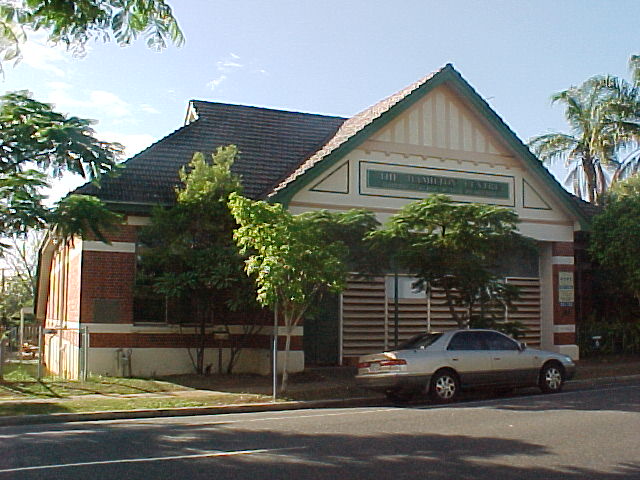Addresses
Type of place
Fire station
Period
Interwar 1919-1939
Style
Queenslander
Addresses
Type of place
Fire station
Period
Interwar 1919-1939
Style
Queenslander
This former fire station, designed by notable Brisbane architect Montague Talbot Stanley, was constructed in 1920 and used by the Hamilton Fire Brigade until 1927. Population growth and residential expansion throughout Hamilton and Ascot in the early twentieth century meant that a permanent fire station and brigade for the local community were essential. However, in 1927 the fire station closed after a new station was built at Albion and the building has since been used for a variety of purposes including a garage, offices for the Allied Forces during World War Two and, after the war for tertiary education and community facilities. The building remains a fine example of an early Brisbane fire station with a domestic design and demonstrates the development of the emergency services in Brisbane.
Lot plan
L43_SL460
Key dates
Local Heritage Place Since —
Date of Citation —
Construction
Roof: Terracotta tile;Walls: Face brick
People/associations
Montague Talbot Stanley (Architect)Criterion for listing
(A) Historical; (D) Representative; (H) Historical associationInteractive mapping
Lot plan
L43_SL460
Key dates
Local Heritage Place Since —
Date of Citation —
Construction
Roof: Terracotta tile;Walls: Face brick
People/associations
Montague Talbot Stanley (Architect)Criterion for listing
(A) Historical; (D) Representative; (H) Historical associationInteractive mapping
History
This fire station was built on land that was once part of Tattenham Corner Estate adjacent to Ascot racetrack and Ascot railway station. Tenders for its construction were called in October 1920 with M. Doggett’s tender of £4800 being accepted. The new fire station was opened by the Mayor of Hamilton Shire, George Rees, on 23 December 1920. Coins of the realm and a copy of the previous day's issue of "The Daily Mail" were placed in the crevices and the foundation-stone was placed in position, tapped with a silver trowel (suitably inscribed) and a wooden mallet by the Mayor, and subsequently declared "well and truly laid." At this time there were several separate fire brigades in Brisbane. The Hamilton Fire Brigade was established in 1908, and was a volunteer service until 1920. With the opening of the new station the brigade became a permanent facility.
At the time the station was opened Hamilton and Ascot were developing as elite suburbs and had undergone significant population growth. The rising population level and housing development made it increasingly important that Ascot have its own permanent fire brigade and station.
The station was designed by Montague Talbot Stanley, eldest son of architect F.D.G. Stanley. At first Stanley worked in his father’s firm, but later formed a partnership with Alfred Herbert Foster. Stanley worked in Brisbane until his retirement in 1927. The Fire Station is of similar design to, and complements the nearby Hamilton Town Hall, which Stanley also designed about the same time.
The building remained in use as a fire station only until 1927, when it was superseded by a new station at Albion that was called the “Northern Suburbs Fire Station” under a new policy of concentrating the staff and appliances in modern stations to more efficiently service larger areas. Since then the building has had a range of uses, including service as a garage, and offices of the Allied Forces Intelligence Bureau during the Second World War. After the war, the building was used for educational purposes: first as a classroom by the Education Department, and by the Department of Employment Training and Industrial Relations as a TAFE classroom. In 2009 the property was purchased by Brisbane City Council and is used as a community centre.
Description
The former Ascot Fire Station is a one storey masonry building fronting Kitchener Road, Ascot, one of the main thoroughfares of the area. The well-composed, symmetrical building is designed in a simple interwar style, with a large gablet roof punctuated by a large streetfacing gable, clad with tiles. The building is facebrick with rendered bandings and retains original timber window sashes in places. The front entrance has been altered to include modern doors and windows. Minor detached structures standing in the rear yard are not of cultural heritage significance.
Statement of significance
Relevant assessment criteria
This is a place of local heritage significance and meets one or more of the local heritage criteria under the Heritage planning scheme policy of the Brisbane City Plan 2014. It is significant because:
References
-
BCC Detail Plans with Contours
-
Calthorpe, Kevin and Ken Capell. Brisbane Ablaze. Brisbane: Queensland Fire and Rescue Authority, 2001
-
Nundah and Districts Historical Society, Historic Drive: Clayfield, Ascot, Hendra, 2000
-
Queensland Post Office Directories
Citation prepared by — Brisbane City Council (page revised September 2020)

